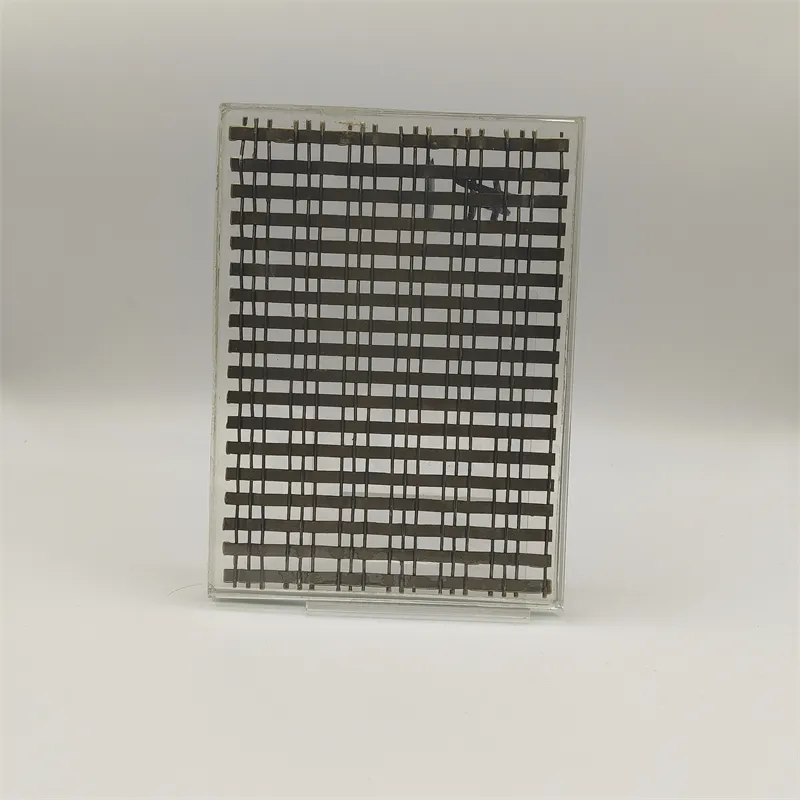Nov . 10, 2024 22:36 Back to list
Cost Analysis of Mirror Glass and Its Impact on Interior Design Choices
Understanding the Cost of Mirror Glass Factors and Implications
Mirror glass is a versatile material used in a variety of applications, from interior design to automotive and technological uses. The cost of mirror glass can vary significantly based on several factors, which are crucial for consumers, manufacturers, and designers to understand. This discussion will explore these factors, the implications of cost variations, and how they affect different industries.
1. Materials and Manufacturing Processes
The primary factor affecting the cost of mirror glass is the materials used in its production. Standard mirror glass is typically made from float glass coated with a reflective material, such as silver or aluminum. The purity and quality of the materials contribute significantly to the final price. For instance, high-quality glass with minimal impurities will yield a clearer and more durable mirror, while lower-grade materials may reduce costs but compromise quality.
Moreover, the manufacturing process itself plays a crucial role. Advanced technologies, such as chemical vapor deposition (CVD) or vacuum deposition, are commonly employed to create high-quality mirrors. These processes are not only more expensive in terms of equipment and operational costs but also require skilled labor. As demand for precision and durability in mirror products increases, manufacturers may invest in higher-end technologies, further driving up costs.
2. Thickness and Size Variability
Mirror glass comes in various thicknesses and sizes, and these variations directly influence pricing. Thicker glass is generally more expensive due to the increased amount of raw materials needed and the complexity of handling larger sheets during production. Additionally, custom sizes often require specialized cutting techniques and handling, which can also contribute to higher costs.
3. Finishing and Coating Options
In addition to the basic reflective surface, many users opt for additional finishing and coating options to enhance durability or aesthetic appeal. Anti-fog coatings, UV protection, and special tints can significantly impact the price of mirror glass. While such enhancements may represent a higher initial investment, they can result in lower maintenance costs and improved longevity, offering better value over time.
cost of mirror glass

4. Market Demand and Economic Factors
The cost of mirror glass is also subject to fluctuations in market demand and broader economic conditions. For example, changes in construction trends, such as an increased emphasis on energy-efficient building designs, can drive up demand for high-performance mirrors, subsequently increasing their cost. Additionally, global supply chain disruptions, inflation, and material shortages can all affect pricing, making it essential for consumers to stay informed about market trends.
5. Shipping and Handling Costs
Shipping logistics add another layer of complexity to the cost of mirror glass. The delicate nature of glass requires careful handling, specialized packaging, and often higher shipping costs. Companies must account for these logistics when pricing their products, which may be reflected in the retail price. For bulk purchases, customers may find savings, but smaller buyers may face higher shipping fees relative to their order size.
6. Applications and End-use Markets
Finally, the application of the mirror glass plays an essential role in its pricing. Automotive, architectural, and technological sectors all utilize mirror glass but may have different standards and specifications. High-performance mirrors required in automotive applications may be more costly due to certification requirements and additional features such as heated surfaces or built-in technology.
Conclusion
The cost of mirror glass is influenced by a multitude of factors, encompassing material quality, manufacturing techniques, size and thickness, finishing options, market dynamics, and shipping logistics. Understanding these factors not only helps consumers make informed purchasing decisions but also enables manufacturers and designers to balance quality, functionality, and cost. With the ongoing advancements in technology and changing market demands, the landscape of mirror glass pricing is likely to continue evolving, making it an important subject for ongoing observation and analysis.
-
Safety and Style with Premium Laminated Glass Solutions
NewsJun.24,2025
-
Reinvents Security with Premium Wired Glass
NewsJun.24,2025
-
Premium Float Glass Line for Modern Architecture
NewsJun.24,2025
-
Low Emissivity Glass for Energy-Efficient Architecture
NewsJun.24,2025
-
High-Performance Insulated Glass Solutions for Modern Architecture
NewsJun.24,2025
-
Elevates Interior Style with Premium Silver Mirror
NewsJun.24,2025
Related PRODUCTS














